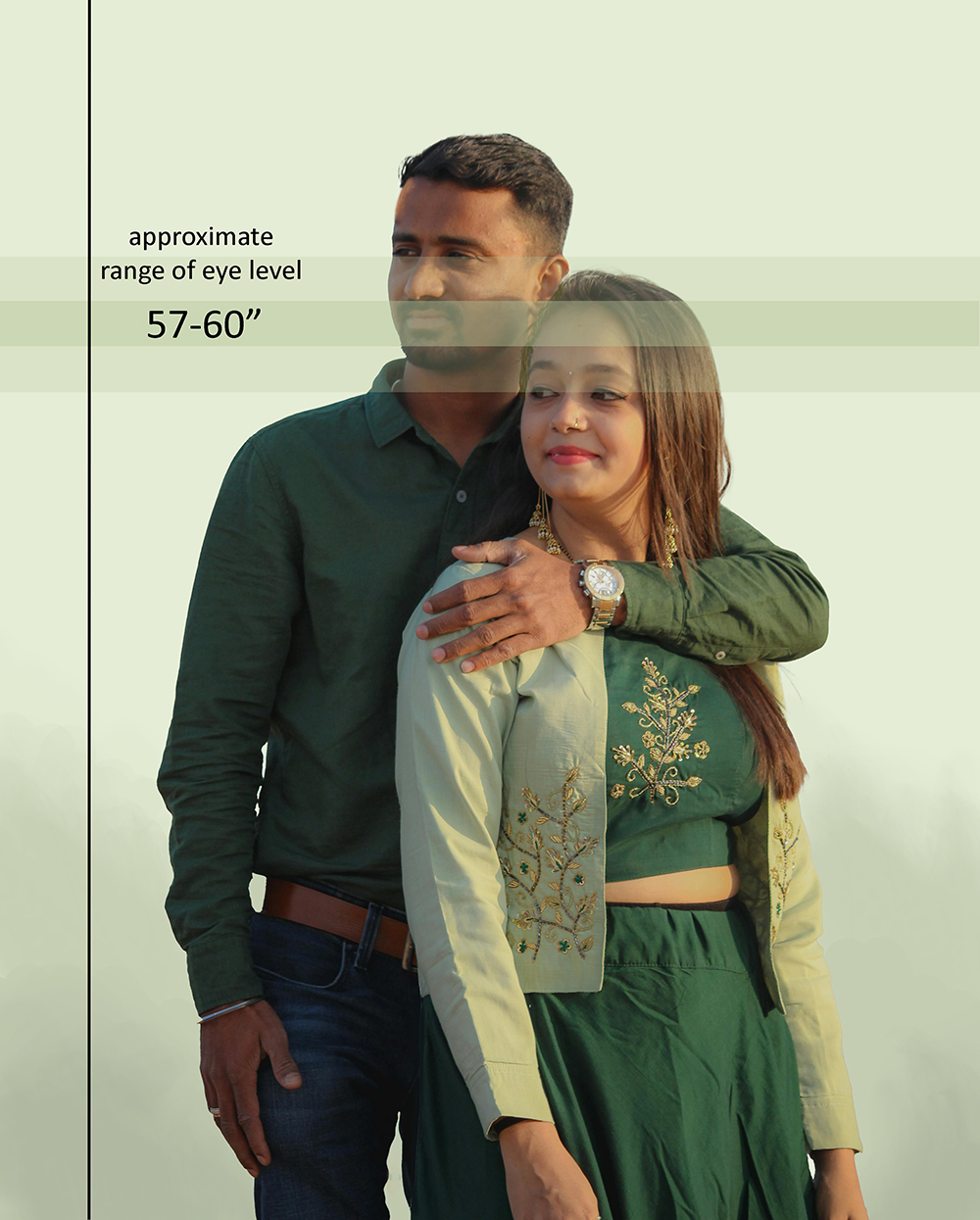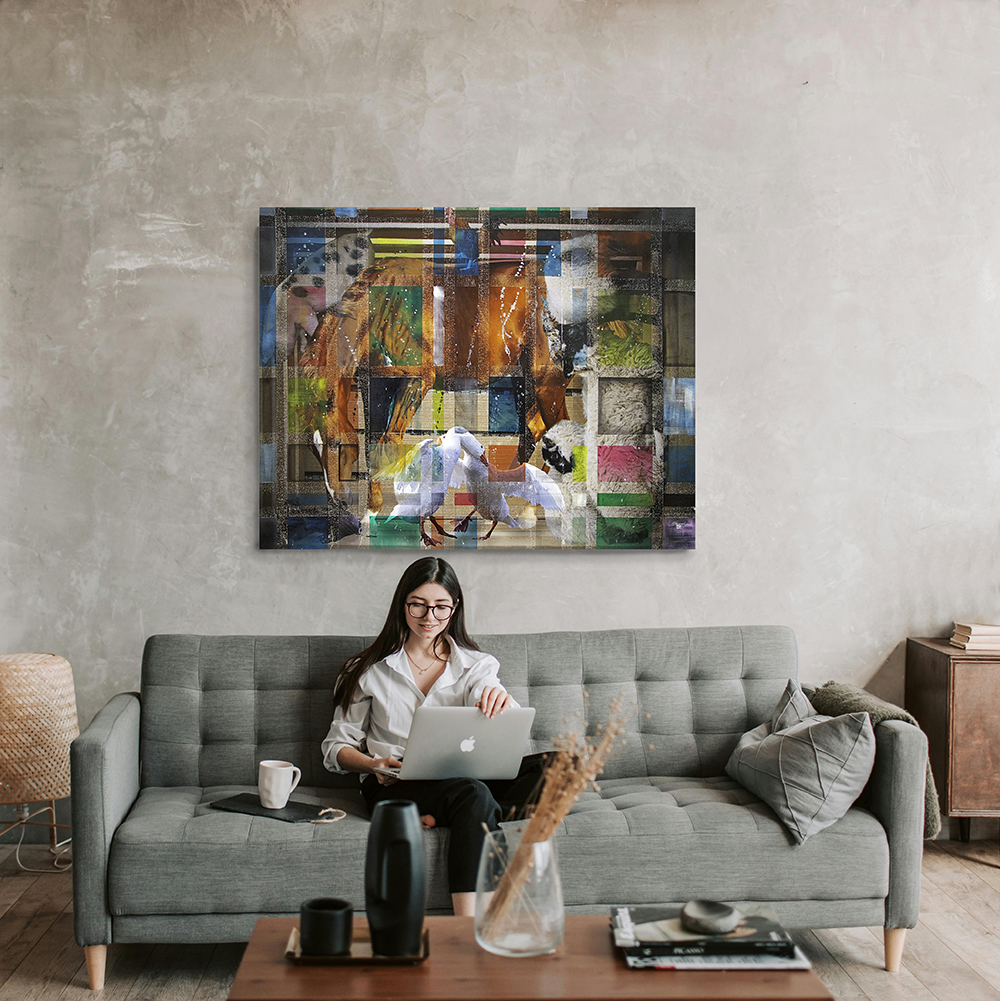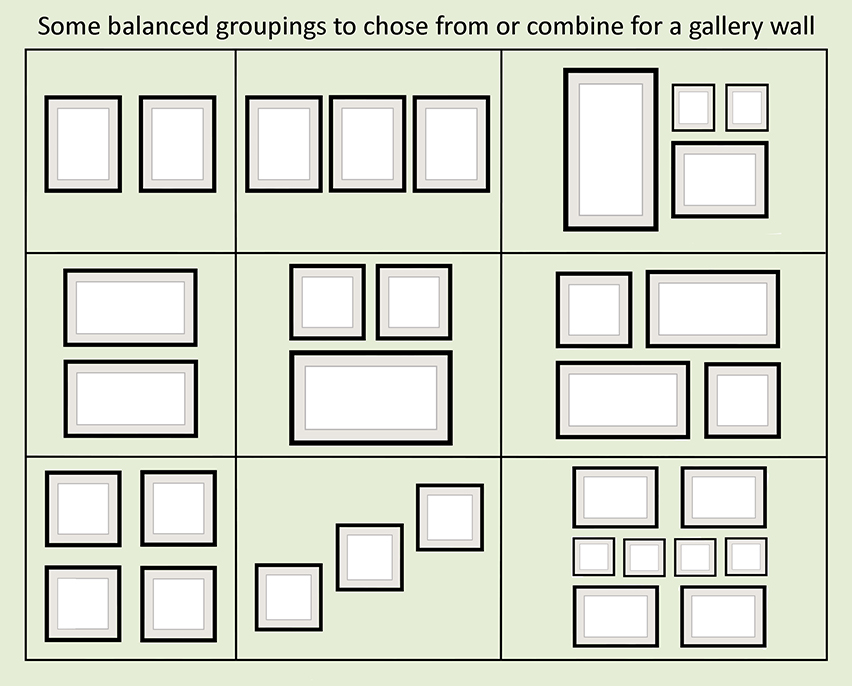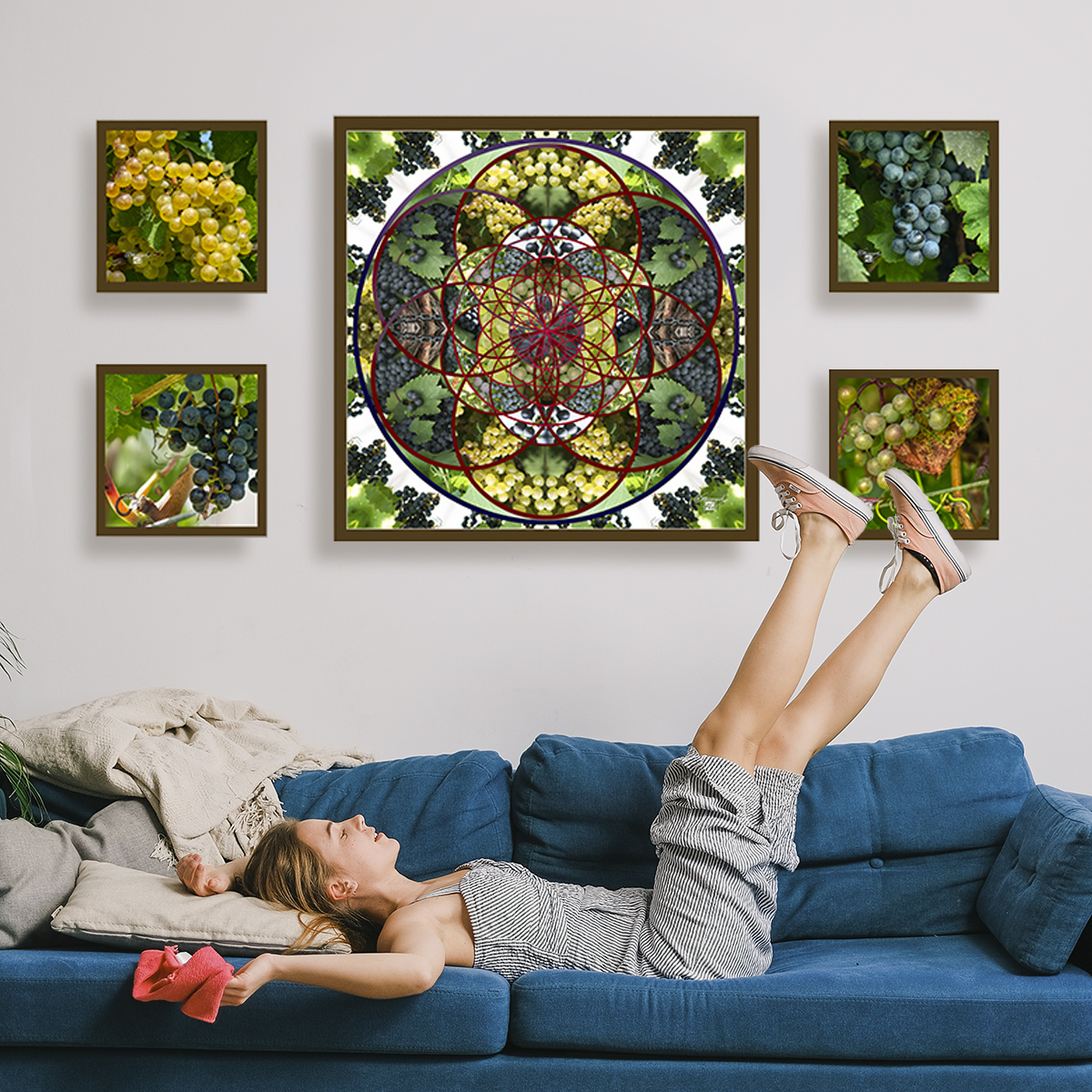Covering a lot of ground, this guide will help you hang art like a pro, with its simple, concise tips and visuals.
Hanging art is not rocket science, but… Are you hanging a single painting on the wall or a dozen? How large is the wall? How high is your ceiling? What size is the art? And the questions pile up.
I’m going to keep the answers as simple and concise as possible. The goal is, by the end of this entry you will be able to confidently add wall art to your home décor like a pro.
Hanging Art as a Single Piece on Your Wall
At What Height?

Art is usually hung at eye level. Typically 57-60 inches, measured from the center of the artwork. The height may change IF…
- You are hanging it behind a piece of furniture. You will need to take the height of the furniture into account. If behind a couch, have an adult sit on the couch to make sure the art is a comfortable distance above their head. A popular measurement with interior decorators is to have 6-10” above a piece of furniture. Stay to the higher end for above a couch.
- Your ceiling height is not typical. Think of the under stairs half bath. A small piece of art may be exactly what you’ll want in this tiny space. Try holding the picture up to different areas in the room to see what effect it has. Keep it as close to eye level as you can, but don’t be afraid to break the rule. Your comfort level with your choice of location is more important than measurement.
- The artwork is very large. A six foot high painting will most likely be viewed from a distance on a large wall. If you tried measuring from center, it would nearly touch the floor! Much of the time, you just have to go with what looks right to you in its new surroundings.
- If hanging art along a staircase, keep the art at the same angle as the stairs. Measure from the stair directly below the art and measure to the bottom of the picture. Hang the artwork at eye level and make sure the measurement is the same for each of the pictures along the staircase.
How Much Wall Space Do I Need?

- Do not crowd the art. Leave space to breathe between the frame and the end of the wall, a window or moulding around a door. Again, this is subjective, but I’d say I wouldn’t want the edge of the picture frame to be any closer than 4-8” from the edge of whatever is next to it on the wall.
- Another popular measurement rule is the rule of 2/3. To avoid your wall art from looking like it’s taking over the space, keep the width at or under 2/3s of the width of the couch, furniture or wall it’s placed on.
Consider arranging art groupings for your wall display.
How many pictures on a wall?
- Grouping of art can be a wonderful display. A group can be of any size…2,3,…10 or more. General thoughts of hanging groups of art…
How much space between the pictures?
- Keep a few inches or more between them. You don’t want them to look like they are piled on top of each other, fighting for space.
Symmetry/Asymmetry?
- My mathematician husband and I have totally different ideals here. He wants EVERYTHING symmetrical. I tend towards asymmetry, but truthfully, they both are great considerations for hanging art. Symmetry tends to be more formal than asymmetry and works well with identical sized art. Asymmetry doesn’t have to be informal, but it certainly is easier to group a variety of sizes together.
Relationship of sizes?
You can hang all kinds of sizes together. The variety of sizes can be an effective décor choice. There are some general rules though…
- Small artworks have lighter visual weight. Lighter colors have lighter visual weight. Large artworks or darker colors have heavier visual weight.
- Visually heavier art belongs UNDER lighter pieces so the lighter pieces don’t look like they are being squished by the larger, darker pieces. The frames have a play in this too. Dark, wide frames can add weight to smaller pieces.
- If you group four small identical sized pictures together, it will have the same visual weight as one artwork the total size of the group. Thus, it can be hung UNDER one smaller, lighter picture than the combination.
- If the artwork is of a variety of sizes, hang them by matching their centers, rather than lining them up evenly at the top or bottom.
- If the same size, it’s a no brainer… match them top and bottom if you are hanging them in a row.
Different Grouping Ideas

I’ve put together a variety of grouping ideas for you. If you have a large selection of art you want to group (called a gallery wall) I can suggest one of two choices to make sure you get it right.
- Measure out on the floor the size of the wall you will be working with. Blue painters tape comes off any surface easily, so I would mark your floor with that. Once you have your space marked off, lay the pictures in place. Move them around until you are happy with the grouping.
- If you are more comfortable working at the desk, you can create the grouping on graph paper or on your computer. Same thing… make separate rectangles that represent the correct sizes, label which picture it is and move them around until you get what you want.
WARNING: Consider Color, Line and Contrast

Not every piece of art will look fantastic next to each other. If you are grouping a collection of B&W photographs, that makes it easier. OR grouping similar colors and styles of art?…another easy choice.
But, what about art that don’t necessarily stay within a set. Can you hang those together? Well it depends. I wouldn’t want to necessarily hang Abstracts and High Renaissance together, but if the colors coordinated, well, …it depends on the art.
Grouping a variety of art, you should at least consider that they “GO” together. Once that is established, try evenly placing dominant colors, lights and darks throughout the group. Your eye will travel around the grouping, usually from left to right (the way we read) in a circular motion and catching the lighter or brighter sections first.
Encourage your eye to travel throughout the group by connecting leading lines from one picture to the next.
- Leading lines is the linear quality in an artwork that leads you toward the subject. If you have lines in an art that leads you across the picture at a diagonal, you can find another picture where the lines will visually connect.
Or connecting a certain color, common within a number of your artworks, placed in areas that will help your eye travel from one to another.
This also works with contrast and dark areas.
Conclusion:
We covered a lot of possibilities, but you can keep it simple by just concentrating on the parts that pertain to you personally at this time.
Want to hang three pictures together of the same size?…simple. Just go to the areas that pertain to that one thing. Don’t try to take it all in until you need this information again for another wall and another circumstance.
The visuals will help immensely. If you are new at hanging art, try something simple before trying to create a gallery wall.



You’re welcome